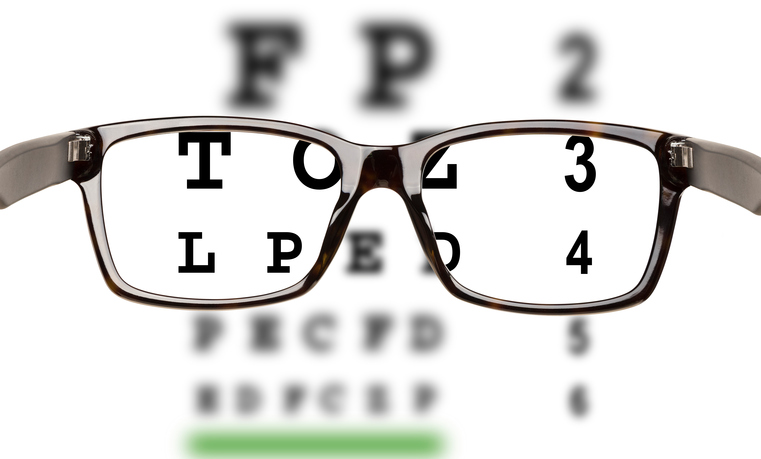What is presbyopia? The aging eye condition

Presbyopia occurs mostly after the age of 40. It affects everyone as a result of the natural aging process. The first symptom is the inability to focus on near objects. The impairment is also known as "short arm syndrome", since reading material must be held further and further away in order to be sharp.
Most common symptoms
- Malaise
- Headache
- Eye Pain
- Head spinning
- Eye irritation
- Itchy eye
- Pressure in the eye
- Cutting the eye
- Fatigue
- Redness of the conjunctivae
- Blurred vision
- Deterioration of vision
Characteristics
Presbyopia arises as a result of the body's natural aging process, and therefore of the eye. It is not a typical disease, neither is it a visual defect or a visual impairment.
Just like the organism, the eye ages over time, too, so the lens is affected along with it as a natural outcome.
The purpose of the lens is to focus the observed image to create a sharp outline on the retina. This feature is also referred to as accommodation.
"Presbys", the Greek word for "old", and "opia" for "sight, vision".
It is sometimes called the aging eye condition.
That is incorrect, because it affects people at a younger age as well.
Presbyopia is also known as the short arm syndrome. It is neither a disease nor an impairment.
In youth, the lens is very elastic. It is able to focus at any distance. At age 10, the sharpness of the near point is approximately 7 cm away, after the age of 40 it is already 20 cm away and after the 60th year it is 1 meter.
In optics, a near point in the eye means: the closest point at which an object can be placed into focus.
Dioptre is a unit of measurement of the optical power of a lens. Its value at birth is + 20D, at age 40 it is +3D, and at age 60 it is about +3D.
Decreased accommodation is the result of changes in the lens, where the ratio of water and other substances changes. The lens' elasticity decreases, which affects the ability to adapt to current needs.
Presbyopia starts between the ages of 40 and 50 years. It affects 100% of the population. It occurs sooner in some and later in others.
It is affected either by pre-existing short-sightednedd, i.e. myopia, or far-sightedness. However, if a person is short-sighted, it occurs later and, conversely, with at an earlier age with already existing farsightedness.
Causes
Question: What is presbyopia, and what is its cause?
Thus, the cause of amblyopia is the aging of the lens, a number of biochemical and biomechanical processes. The ratio of water, other substances such as soluble and insoluble proteins inside the eye lens changes over the years.
This process causes a decrease in elasticity.
What is a lens?
The lens is disc-shaped, transparent, so it lets the light of images through and projects them onto the retina. Its flexibility and the ability to change its curvature helps to sharpen the displayed object on the retina.
The lens, also known by its Latin name "lens crystallin", is the most important part of the eye's optical system.
It consists of three layers, namely the lens capsule, the lens epithelium, and the nucleus. The nucleus contains transparent crystallins. These form a specific optical environment.
The lens grows throughout life and is subject to changes of the aging process. It grows in volume, mass, thickness, and weight. These changes lead to a reduction in elasticity, which is a consequence of presbyopia. The transparency of the lens itself can be affected by age, oxidation, and can be impaired, for example, by a cataract.
The curvature of the lens is changed due to muscle activity. In the past, the aging of these muscles was considered to be the main cause of these issues. However, today we know that this cause (atrophy of the relevant muscles) is not the whole story.
The lens is not capable of accommodating the necessary accommodation and the image close to the eye is blurred, i.e. it is not sharply focused on the retina. The near point is moving farther away, which causes near objects to be blurred.
The reader is moving the near point at an ever greater distance, trying to adjust the focus. We often see people moving the newspaper or book away from the eyes.

Presbyopia affects every person after the age of 40, culminating after 60. The condition does not worsen after that age. The onset of issues is individual and is affected by the initial quality of vision.
To conclude: Presbyopia is not a disease, but arises as a result of the physiological aging of the eye, i.e. the lens.
Symptoms
The first sign of impaired lens elasticity is blurred vision. Close objects are getting out of focus, such as a piece of text that was previously sharp.

The affected person tries to increase the distance of the object in order to place it in focus. At a later stage, the length of the arm is not long enough, which is why the diease is sometimes referred to as short arm syndrome.
Symptoms of presbyopia include:
- blurred, unclear, hazy vision at a short distance
- later on, the same applies to medium and longer distances
- visible stretching of the hands, for example when reading
- squinting
- worsened vision in low light, in an area with dim lighting
- inability to focus when changing the viewing distance, slow focusing
- eye stran and fatigue during prolonged reading
- congestion and redness of the conjunctiva
- pain in the eyes
- headache
- dizziness
Presbyopia causes some issues, especially where sharp vision at a closer distance is required, for example, when reading or working at a computer. At later stages, these issues also occur while watching TV and driving.
Diagnostics
Diagnosis primarily includes the medical history and clinical picture. This means that the information gathered from the person with a vision problem is important.

How do you know you have presbyopia?
- age above 40
- visual issues during normal activities, especially at close distances
- while reading for a longer period of time
- increased eye fatigue or tired eyes
- keeping a book or mobile phone away from the eyes
- blurred vision
- difficulty seeing in an area with dim lighting, whether reading or driving
- eye fatigue
- pain in the eyes
- headache
These symptoms can lead to the assumption that the underlying issue is presbyopia. However, the definitive diagnosis is made by a doctor, i.e,. an ophthalmologist, after an eye (ophthalmological) examination in order to rule out other causes of the issues related to vision.
An optometrist can also perform an eye examination. Optometry is a specialized field which, in addition to presbyopia, also deals with myopia, farsightedness, astigmatism.
Course
The ability to see at short distances begins to worsen after the age of 40. The exact age is individual.

Eye fatigue is the first to occur when reading or working at a computer for a long time. Later on, the issues also occur at dusk/dawn and in poor lighting conditions.
The extent of the damage usually worsens at medium to long distances, for example, when watching TV or driving, especially when the light is dim.
Advanced age goes hand in hand with the worsening of these issues until about the age of 60. At that point, presbyopia stops progressing and usually stops and stabilises.
In addition, other issues already mentioned occur, such as pain in the eyes and headaches, increased drowsiness, especially after longer work.
How it is treated: Presbyopia
How is presbyopia treated? Correction, lenses and laser
Show moreAn informative video
Presbyopia is treated by
Other names
Interesting resources
Related










